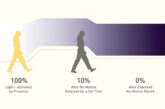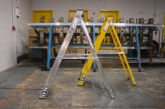
The experts at NICEIC provide more detail on the installation of equipment in meter boxes.
Electrical equipment associated with the consumer’s electrical installation is increasingly being found within the meter cabinet of domestic and similar premises. The space within such cabinets is limited and typically allocated for specific usages by the distributor and energy supplier and therefore, should not be used to house other equipment.
If this guidance is ignored and inappropriate equipment is installed within an enclosure, restricting the activities of the distributor or supplier, customers may incur financial penalties to have such equipment relocated. This is likely to lead to customer complaints against the contractor originally responsible for the installation and result in reputational damage for the installer.
Introduction
When an electrical supply is laid on to a domestic or similar premises, the host Distribution Licence Holder will require the provision of a suitable enclosure at the service position to house the intake and metering equipment. Although this enclosure is provided with the property, the distributor will specify that only equipment belonging to the distributor and meter operator (MOP) should be installed therein.
Industry guidance on meter enclosure provision
The Energy Networks Association (ENA) is the body representing energy networks in the UK and Ireland. The ENA provide guidance within Appendix B (Spatial requirements for whole current metering) of its publication Energy Recommendation G87. Issue 2: 2015 – Guidelines for the Provision of Low Voltage Connections to Multiple Occupancy Buildings (EREC G87) on the minimum provision of space in meter enclosures. This is summarised in Fig 1.

It should be noted that the arrangement of equipment as laid out in EREC G87 and as shown in Fig 1 is for illustrative purposes only. The ENA recognises in its guidance that a “best use of space” approach may be adopted based on particular circumstances and equipment required to be installed.
Nevertheless, the guidance also highlights that these minimum space requirements do not allow for the inclusion of any other additional customer equipment.
Individual Distribution Network Operators (DNOs) will issue their own guidelines on the provision of space in meter enclosures as a condition in their “Connection Offer” to customers. This guidance, although based on the information given in EREC G87, may vary. Typically, the space is divided into four, as shown in Fig 2. However, the guidance on additional customer equipment does not differ from that of EREC G87, as can be seen in Fig 2.

This advice has increased significance because of the smart meter rollout program, as some modern meters and associated equipment can take up more space than the meters they replace. Additionally, it is becoming increasingly common for domestic or similar premises to be provided with three-phase intakes to facilitate future developments in the supply of electricity, such as “prosuming” and the introduction of networks operated by Distribution System Operators (DSO).
This will inevitably result in more demand for space for equipment at the intake position.
Installation of electrical equipment in the meter enclosure
Increasingly, contractors are installing equipment other than that directly associated with the supply and metering arrangements in meter enclosures at the service position. Evidence shows (see Fig 3) that installers of electric vehicle charging equipment find external meter enclosures to be a convenient location to install equipment such as joint boxes/connections in the meter tails, isolating switches, and small consumer units.
In some cases, carrying out the work in this way may have been encouraged by the property owner or occupant, as it avoids the need to install often aesthetically unpleasing electrical enclosures on the exterior of the property.

Implications for the customer
If the DNO or MOP need to attend a domestic or similar premises and encounter equipment other than that used for supply or metering purposes within an approved meter enclosure, this may prevent work activities such as:
● the replacement of lifetime-expired equipment;
● the installation of smart metering equipment;
● the installation of new cut-outs to provide enhanced supply capacity to allow for:
● an extension to the property;
● the connection of embedded generation; or
● the provision of electric vehicle charging equipment or other equipment which increases the maximum demand at the premises.
In such cases, where there is insufficient space within the meter enclosure, the planned replacement or upgrading work cannot proceed until sufficient space is made available therein.
The ENA have issued the following statement:
“While the meter cabinet is the customer’s, it is a space designed for the use of electricity industry apparatus only and no allowance is made for additional equipment. For safety reasons, we would not recommend that any internal wiring, including a consumer unit, is installed within the cabinet.”
Energy Networks Association
Furthermore, this is supported by guidance from the Department for Business, Energy & Industrial Strategy in Section 2.9 of its publication Smart Meter Guidance for Domestic New Builds – Guidance for Developers and Architects, and relevant to all those involved in the specification of metering locations in new-build premises, which is reproduced below:
“External meter boxes/cupboards should only contain equipment required to enable an electricity (or gas) supply to be provided to the premises safely, as defined by relevant regulations.
● Items permitted to be installed within electricity meter boxes/cupboards include: the local isolating device (e.g. main cut-out fuse), the electricity meter and communications hub, and may include a single- or double pole-isolation device (installed between the electricity meter and consumer unit).”
Therefore, where the guidance of the organisations discussed in this article is ignored, preventing any future upgrade work, the customer will be instructed by the DNO/MOP to employ a suitably competent person to remove and relocate the inappropriate equipment – all at the customer’s expense and potentially incurring reputational damage for the previous installer.
Summary
A meter enclosure may be provided at the service position of a premises to allow for the installation of the intake and metering equipment. The space allocation for this enclosure allows for the replacement of lifetime-expired equipment, installation of Smart Meter equipment and for some degree of future supply capacity upgrade.
Only intake and metering equipment should be installed in the meter enclosure, as there is no allowance of space for housing additional equipment not associated with those functions.
If a DNO or MOP attends the premises to carry out work on their equipment and insufficient space is available within the meter enclosure, work will not be able to proceed. The customer will need to organise (at their expense) the removal of unrelated equipment to create the space needed for the work to be carried out.
NICEIC strongly recommends that electrical contractors do not install any other equipment within meter enclosures.
Get more details about NICEIC registration here









